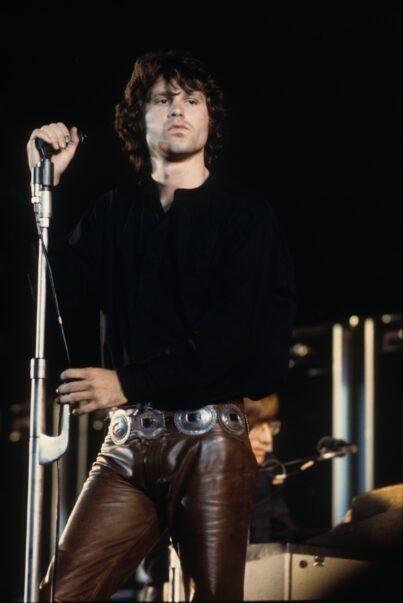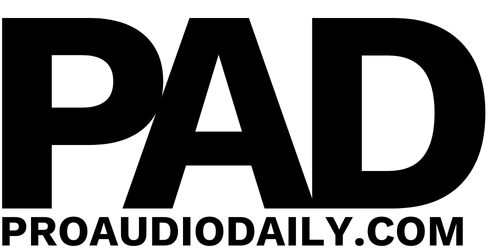
28 Nov 6-LP High-Fidelity Boxed Set ‘The Doors 1967-1971’
Jim Morrison photo by Henry Diltz. Courtesy of Gary Strobl at the Diltz Studio.
Rhino High Fidelity (Rhino Hi-Fi) celebrates the upcoming 60th anniversary of The Doors with the release of The Doors 1967-1971 limited-edition high-fidelity boxed set. The 6-LP collection presents the band’s first six full-length albums: The Doors, Strange Days, Waiting for the Sun, The Soft Parade, Morrison Hotel, and L.A.Woman. This comprehensive package is limited to only 3,000 individually numbered copies available exclusively at thedoors.com and rhino.com. This box will not be available in stores.
A Rhino label announcement describes the retail package.
“The 6-LP set has been packaged in a stunning green snakeskin hardcover box with gold leaf print and features all of the band’s studio albums cut from the original analog master tapes by Kevin Gray at Cohearant Audio. The vinyl was pressed at Optimal Media, and each record is housed in a heavyweight gatefold jacket. The box set also features rare photos and liner notes by The Doors’ archivist David Dutkowski, who has culled together the story of each individual record from unpublished interviews conducted with band members Robby Krieger [guitar], Ray Manzarek [organ, piano bass] and John Densmore [drums] in addition to key figures such as Elektra Founder/President Jac Holzman, producer Paul Rothchild, and engineer/co-producer Bruce Botnick.
The Doors 1967-1971 serves as the ultimate gateway into the universe of one of the world’s greatest rock acts. It revisits the group during a watershed four-year period of unrivaled and utterly prolific creativity which resulted in their debut and best-selling album, the 4x-Platinum The Doors [1967] (#86 on Rolling Stone’s 500 Greatest Albums of All Time), the platinum Strange Days [1967], the platinum and Billboard 200 #1 Waiting for the Sun [1968], the platinum The Soft Parade [1969], the platinum Morrison Hotel [1970], and the triple-platinum L.A.Woman [1971].
The band became a cultural phenomenon with “Light My Fire,” Elektra Record’s first single to top the Billboard Hot 100. This track, along with other unforgettable hits like “Break on Through (To the Other Side),” “People Are Strange,” “Hello, I Love You,” “Touch Me,” “Love Her Madly,” and the hauntingly iconic “Riders on the Storm,” cemented The Doors’ reputation as musical trailblazers.”
Each single and every recording, resonated deeply with audiences, capturing the turbulence, freedom, and bio-regional history and mystery of Southern California of the era while showcasing Jim Morrison’s poetic lyricism.
Formed in Los Angeles, CA, in 1965, The Doors have sold north of 100 million albums globally, with U.S. sales of over 34 million albums. They were inducted into the Rock and Roll Hall of Fame® in 1993, and garnered a GRAMMY® Award for Lifetime Achievement
On Friday, November 29, The Doors’ Live in Detroit was released for Record Store Day’s Black Friday event. Recorded at the Cobo Arena in Detroit, MI, on May 8, 1970, this 4-LP set includes a 17-minute version of “The End,” a real rarity among recorded live shows. One of the longest Doors shows ever caught on tape! Available for the very first time on vinyl.
In 2010, I interviewed Bruce Botnick about the Doors.
“The thing that still works for me is, first and foremost, the music,” underpinned Botnick. “The musicianship. The performance. All of those when these guys connected as a unit and became unconscious is good or better than anything I’ve ever heard. That’s one of the things I have to hand to my friend producer Paul Rothchild. That we went for performance and tried to stay out of it not to become too technically in the front of the albums that were manufactured. It was about the performance. It wasn’t about overdubbing. Because in the majority of what the Doors played on their records was played live.”

In 2003, Steven Van Zandt, songwriter, record producer/guitarist in Bruce Springsteen & the E Street Band, and actor, invited me to see their concert in Sacramento, CA.
Steven later emailed me about the Doors.
“I didn’t like the Doors as a kid. I didn’t get it. I was a total Anglophile on top of being prejudiced against most things from the West Coast. Any guitar player not from the Eric Clapton school was irrelevant, Mike Bloomfield being the only exception, so I didn’t appreciate Robbie Krieger’s Ravi Shankar influenced guitar style.
“Poetry was beyond me, the only exception being Bob Dylan, so Jim Morrison’s Rimbaud meets Dionysius routine went right over my head. John Desmore’s drum craft gently weaving the guitar and keys together was too subtle in my world of Keith Moon, Ginger Baker, and BJ Wison. Ray Manzarek was the exception, being obviously impressive with every keyboard player tested by his ‘Light My Fire’ riff. But I wouldn’t appreciate keyboardists playing with one hand until much later (he played bass with the left).
“Nobody in my neighborhood took the band seriously. And while we’re on the subject, we let the Rascals get away it but we weren’t so forgiving with the Doors’ weird ass no-bass-thing either. As it turned out, of course, I couldn’t have been more wrong. It’s obvious to me now, they were fantastic. They would be one of the defining bands of the psychedelic era.
“They were a brilliant combination of extremely cinematic rock, pop, and art, that featured Existential philosophy, beat poet influenced lyrics, Eastern-style Indian scales, Western-style self-psychoanalysis, and Native American primal, ritual performance. Awesomely original, they were an unpredictable exciting visionary energy for a new world that never quite came to be.”
I witnessed a concert by the Doors at the Forum in Inglewood, California, on December 14, 1968.
On the bill were Jerry Lee Lewis, Sweetwater, and Tzon Yen Luie, who performed with a Chinese stringed instrument, the pipa. The Doors performed with a string and brass section and debuted selections from The Soft Parade.
In 1973 I coordinated two accredited upper-division English and music curriculum courses conducted by Dr. James L. Wheeler, assistant professor in the School of Literature at San Diego State University. A story in the April 14, 1973, issue of Billboard magazine reported the department’s academic aim as “the world’s first university level rock studies program.”
I placed Jim Morrison’s The Lords and the New Creatures on the required book list.
Ray Manzarek heard about our classes and was very complimentary about students seriously studying Jim Morrison as a poet, along with the catalogs of Jimi Hendrix, Bob Dylan, the Rolling Stones, Curtis Mayfield, Leonard Cohen, The Band, Jefferson Airplane, the Beatles, Donovan, Laura Nyro and Love.
One evening, Ray and associate Doors’ associate Danny Sugerman arranged for me to screen the only existing print of Jim Morrison’s Feast of Friends movie on the SDSU campus.
I met Manzarek in 1974 and interviewed him at the Mercury Records’ office on Hollywood Boulevard. I conducted a dozen interviews with him over four decades.
During April 1974, I encountered a grieving Pamela Courson, Jim Morrison’s common law wife at a party in Laurel Canyon at the home of Danny Sugerman. In 1978 Danny was a guest on my television series 50/50, that I co-produced and hosted, promoting his just-published book with Jerry Hopkins, No One Here Gets Out Alive (1978), the first biography of Jim Morrison.
Our interview was utilized as a EPK (Electronic Press Kit) by Warner Books advancing Sugerman’s book tour. Record producer Michael Lloyd, multi-instrumentalist /songwriter/producer Todd Rundgren and legendary radio deejay Murray the K were guests on other episodes.
During a pre-production meeting with Murray, I had unearthed from his own archives a “lost” copy of the Doors doing “People Are Strange” from his Murray The K in New York 1967 television series and programmed it on 50/50. It was broadcast on Z Channel, Public Access and Manhattan Cable. During 1978, Cynthia Kirk in Variety then interviewed me, and reviewed 50/50, writing, “50/50 was on a par with The Midnight Special.”
In the mid-eighties, Ray Manzarek played piano and organ on albums I produced and at shows presented in Santa Monica at McCabe’s Guitar Shop with Michael C Ford, Michael McClure and Allen Ginsberg.
During July 1995 in East Hollywood at the MET Theatre on Oxford Avenue, I produced and co-curated with director Darrell Larson and associate producer Daniel Weizmann a month-long Rock and Roll in Literature series.
Manzarek, Densmore and Krieger reunited and played “Peace Frog,” “Love Me Two Times” and “Little Red Rooster” on July 8th. Music journalist Kirk Silsbee read from Art Pepper’s Straight Life, John Densmore did an entry from his new novel, and actor Michael Ontkean recited Ode to L.A. by Jim Morrison.
Ray discussed “Hello, I Love You.”
“It was a song Jim wrote on the beach when we used to live down in Venice,” responded Ray. “Dorothy (Fujikawa, his future wife) would go off to work and Jim and I would go off to the beach around the rings on the sand at Muscle Beach and work out around the bars, rings and swings getting ourselves into physical shape.
“Ecology was very, very big. We were all trying to save the planet. The sun was the energy. The supreme energy. The establishment, as we called it, the squares, they were called in the fifties, the establishment as they were called in the sixties, were trying to stop drug use, the smoking of marijuana and were trying to stop any kind of organic fertilizer. The word organic to them meant hippie, radical pot heads and people who wanted to leave behind the organized religions and start a new tribal religion based on American Indian folklore. That’s indeed what we were. We called ourselves the new tribe.”
Harvey Kubernik is the author of 20 books. Sterling/Barnes and Noble in 2018 published Harvey and Kenneth Kubernik’s The Story Of The Band: From Big Pink To The Last Waltz. In2021 the duo wrote Jimi Hendrix: Voodoo Child for Sterling/Barnes and Noble. Otherworld Cottage Industries in 2020 published Harvey’s Docs That Rock, Music That Matters. He is currently writing Screen Gems: (Pop Music Documentaries & Rock ‘n’ Roll TV Scenes) for 2025 publication.
Kubernik is in several book anthologies, most notably, The Rolling Stone Book of The Beats and Drinking With Bukowski. Harvey wrote the liner notes to CD re-releases of Carole King’s Tapestry, The Essential Carole King, Allen Ginsberg’s Kaddish, Elvis Presley The ’68 Comeback Special, The Ramones’ End of the Century and Big Brother & the Holding Company Captured Live at The Monterey International Pop Festival.
During 2006 Harvey spoke at the special hearings initiated by The Library of Congress held in Hollywood, California, discussing archiving practices and audiotape preservation. In 2017 Kubernik appeared at the Rock and Roll Hall of Fame in Cleveland, Ohio, in their heralded Distinguished Speakers Series.

